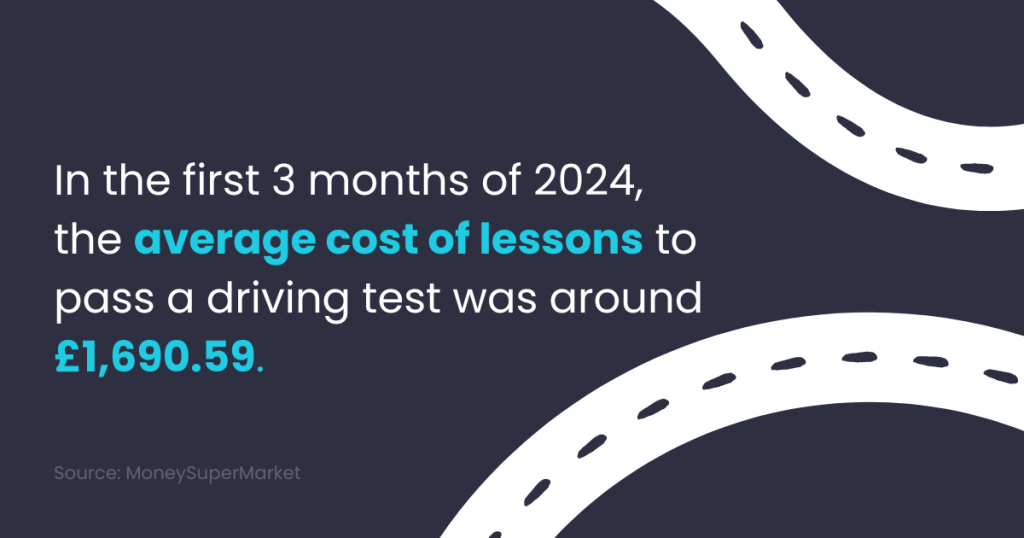Last Updated on March 24, 2025
Becoming an Approved Driving Instructor (ADI) is a rewarding career as it offers flexibility and the chance to help learners gain the skills they need to become safe and confident drivers. However, one of the biggest challenges for both new and experienced instructors alike is determining how much to charge per hour.
Setting the right hourly rate as a driving instructor is essential to covering your costs while remaining competitive in your local market. In this guide, we’ll break down the key factors that you need consider when setting your rate, discuss the average cost of lessons in the UK, and provide useful insights to help you decide the best price for your services.

What Needs to Be Factored in When Considering My Hourly Rate as an ADI?
Before settling on your driving instructor hourly rate, you need to take several factors into account. Here are five key considerations to ensure your rate is fair, competitive, and sustainable:
1. Operational Costs
Your hourly rate needs to cover all the expenses associated with running your business. These individual costs will vary for every ADI. Some examples include:
- Vehicle costs – Fuel, maintenance, depreciation, and insurance
- ADI Licensing and registration – ADI registration fees and any ongoing professional development.
- Marketing and advertising – Website, online ads, or social media promotions to attract new learners if they are going self employed
- Business expenses – Phone, scheduling software, and any additional resources needed for driving lessons.
2. Location and Competition
Your area will significantly influence how much you can charge. For example, driving instructors in London or any other major city with a large population, may often charge more due to higher demand and increased living costs. On the other hand, rural areas might have lower rates due to lower competition and cost of living. It could be beneficial to research local competitors to ensure your price is in line with what learners are willing to pay and use this as a rough guide for your pricing.
3. Your Experience and Qualifications
The more experienced and qualified you are, the more justified you are to charge more for your services. If you have a strong pass rate, offer specialist training, or have additional certifications, you could potentially justify a premium price.
4. Lesson Package Discounts
Many driving instructors offer discounted rates for block bookings. An example of this would be ‘10 lessons for a reduced price’. Initially, this could potentially lower your hourly rate however on the contrary, this can help ensure a steady stream of income and encourages long-term learners, as opposed to learners booking one-off lessons for 1-2 hours at a time.
5. Lesson Duration and Availability
Some ADIs will encourage 90-minute or two-hour lessons instead of one-hour sessions, allowing them to maximise their earnings while reducing travel time between students in different locations. If as a driving instructor, you’re considering doing evening and weekend slots, this may also justify a higher rate due to the increased demand and potentially longer waiting lists.
What Should My Hourly Rate Be?
According to Money SuperMarket, the average cost of driving lessons in the UK typically ranges between £25 and £30 per hour with most learners requiring around 45 hours of lessons to be test-ready, though this depends on individual progress Offering structured lessons and clear progress tracking can help learners feel they are getting good value for their money and that they on their way to passing.

Source: https://www.moneysupermarket.com/car-insurance/how-much-are-driving-lessons/
Should You Charge More for Intensive Courses?
Intensive courses, which can involve learners taking multiple lessons a week or daily sessions over a few weeks, are a very popular option for learner drivers who want to progress quite quickly. Since these require greater instructor availability and often involve more focused training, you might consider charging a premium hourly rate for intensive courses, more than you would for regular driving lessons.
The Impact of Fuel Prices on Driving Instructor Rates
Fuel is one of the biggest ongoing expenses for driving instructors. With fluctuating petrol and diesel prices affecting all road users, many ADIs adjust their rates gradually over time to ensure they cover rising costs. Keeping an eye on fuel prices and adjusting your rates accordingly will help maintain profitability without sudden price hikes that could deter students.

Conclusion
Setting your hourly rate as a driving instructor requires a careful balance between covering costs, remaining competitive, and ensuring you’re fairly compensated for your time and expertise. By considering all the relevant costs, such as operational expenses, local competition, and the value you provide, you can fairly determine a price that works for both you and your learners.
The average driving instructor hourly rate in the UK is around £25-£30, but factors like location, experience, and lesson format will influence your final pricing decision. Ensure that you keep reviewing your rates periodically to stay competitive and profitable.
FAQs
Yes! It is not uncommon for ADIs to charge higher rates for evening and weekend lessons due to increased demand and limited availability.
Generally, automatic driving lessons are priced higher than manual lessons due to increased demand and the higher cost of automatic vehicles, but this can vary between ADIs.
You can justify a higher rate by emphasising your experience, high pass rate, additional qualifications, and excellent reviews from past learners.
Many instructors offer discounts for learners who book multiple lessons in advance. This helps ensure a steady income while encouraging long-term students.
It’s a good idea to review your rates every 6-12 months, considering fuel prices, operational costs, and local competition.









